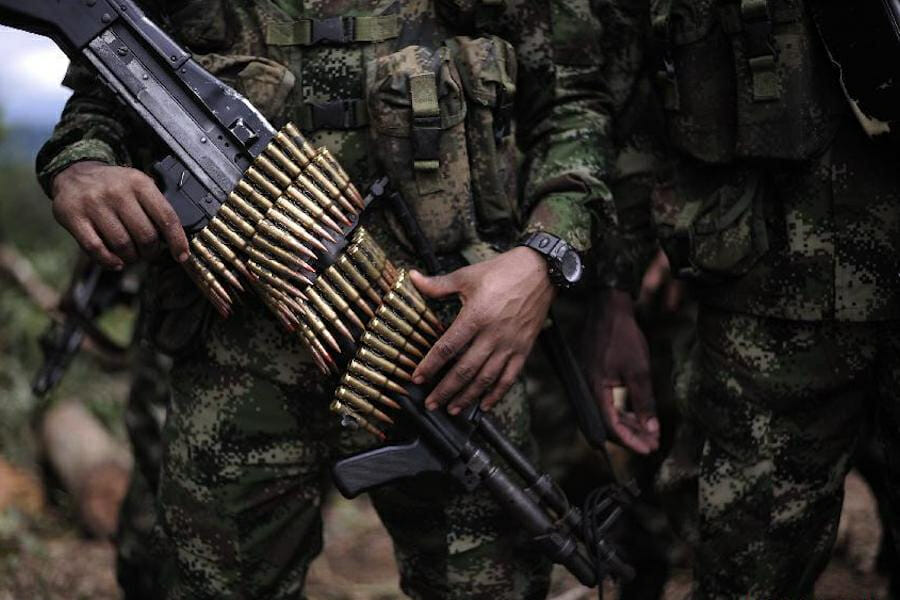
Panama’s Untold Story: Security and Police Forces Step up their Game
To say Latin America is not considered a safe area would be an understatement. Indeed, the UN Office of Drugs and Crime paints Latin America as the most dangerous spot in the world and the only place where homicide rates keep rising. However, is the region really to blame for its years of violence and bloodshed?
It all began with the infamous “war on drugs” announced by Richard Nixon in 1971, rooted in the belief that all drugs are evil and that we must ensure their ultimate destruction using any means necessary. More than 4 decades and some $1 trillion later, US drug policy is now more militarized than ever, focused solely on conducting army and police operations. The results are usually expressed in cold numbers linked to the area of drug crops destroyed or the unprecedented number of arrests made after each operation. But is this enough?
With regards to eliminating the drug problem, or even drugs themselves, these heavy-handed efforts have proven to be utterly useless. US policies have created unintended consequences both at home and abroad, fueling the anger of violent, money-hungry drug barons and putting the lives of many innocent civilians at risk.
Caught in this crossfire, Latin American countries are paying a high price for the habits of their neighbor’s addictions and the costly approach of the “war on drugs,” which leaves the drug cartels fighting for the control of a market worth in excess of $300 billion.
Mexico, which shares a 2000-mile border with the US, is one of the countries that has seen the most bloodshed since 2006 when it embraced the same militaristic approach to cure its rampant drug problem. While Mexico’s cartels have been fighting each other for land, over 60,000 people have been killed during the land battles of Mexico’s cartels, and numbers are growing by the day. In short, this approach has taken the battle for trafficking routes to Mexico’s streets, turning the country itself into a constant battlefield between cartels and the authorities.
Panama’s success story
Each year, over 12,000 vessels pass through the Panama Canal which is considered a prime spot for drug cargos, handling hundreds of tons of goods which pass from Columbia to drug hungry markets in the US and Europe. But things have been changing since the mid-2000s in Panama when drug trafficking appeared to hit an all-time high. How has this been achieved?
The Panamanian government has taken a different approach than its Latin American counterparts, seeking to blend together the military aspect with a preventive strategy. As a result of this mixed approach, Panama has become one of the safest countries in its region, with a homicide rate of 18 deaths per 100,000 population that is far below that of Honduras (85.5), El Salvador (24) and Guatemala (32). In addition, Panama is one of the few places where police forces have undergone significant reforms to tackle drug violence and is now considered, along with the Dominican Republic and Nicaragua, the only place in Central America where citizens actually trust and have confidence in their criminal justice systems.
Panama’s fight against crime has been bolstered by calling to its support the acumen of Interpol, signing a three-year program in 2011 to develop new ways of combating organized crime in the Americas. Its dedication to the Interpol-led Operation Lionfish, aimed at fighting the trafficking of drugs and weapons on the sea, led to huge successes in 2013. In May and June alone, authorities were able to seize 15 vessels containing some 30 tons of illegal drugs and arrest 142 smugglers. Before teaming up with Interpol, Panama’s best year on record had been 2005, with a measly annual capture of 30.5 tons.
In the local sphere, the Panamanian government has implemented the National Public Safety Strategy with a budget of US$37 million aiming to lower the homicide rate from 18 per 100,000 residents in 2013 to 15 by 2015.
Focusing on prevention
In a break with the traditional militarized approach employed by the US and Mexico, Panama went a step further, implementing a community orientated programs. The training of Panama’s National Police force consisted of improving the dialogue between enforcement agencies and troubled communities leading to a preventive approach to the crime problem.
Success can be evidenced by the “Unidad Preventiva Communitaria” program implemented in 2012 after the arrival of the new police chief Julio Molto. The program entails a proximity approach aimed at getting closer to communities and proposing leisure activities for children in high crime areas such as Curundu and El Chorillo. The “Unidad Preventiva Communitaria” interactive Facebook page illustrates police efforts to provide communities with teaching tools, football matches, and creative arts activities and competitions. This is hugely important for a place where gangs often recruit young children as their smugglers or even as human shields. This ‘stay in school’ approach taken by police forces should be viewed as a model for other Latin American countries as a way to tackle their rising homicide rates and crime problems.
President Ballestrazzi of Interpol welcomed the partnership with Panama saying that “an extensive modernization process has made Panama a dynamic actor in the fight against organized crime and criminal groups for the countries in the region and beyond” praising Panama for its success locally and internationally in fighting crime.
While some are often too quick to label anything south of Texas or California as a black hole of crime, corruption and violence, Panama’s and other’s efforts to battle the grave problems associated with the US-led War on Drugs should be welcomed as steps in the right direction.

